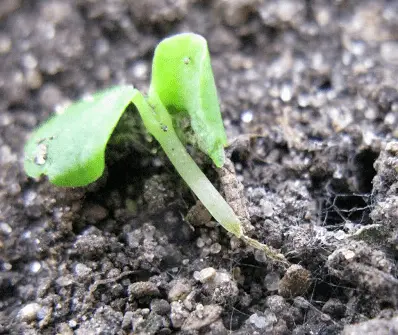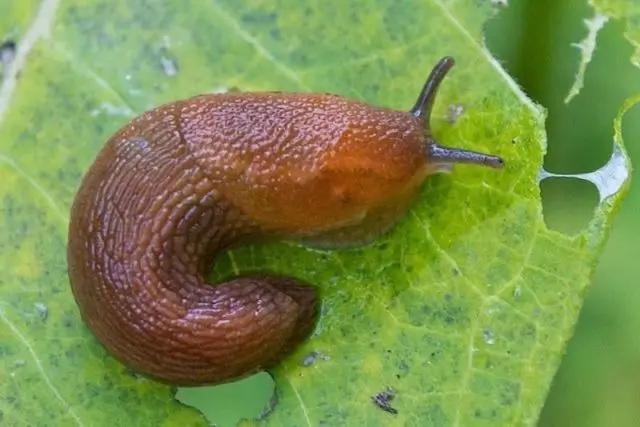Contents
Growing the Carpathian bell from seeds is most often done by seedlings. To successfully sprout, the seed of this flowering ornamental perennial needs an abundance of ambient light, consistently warm air temperatures, light nutrient soil and moderate watering. At the initial stage, the seedlings of the Carpathian bell develop rather slowly and need proper care. However, after transplanting grown seedlings into open ground, they grow rapidly and, under favorable conditions, can begin to bloom already in the current season. Adult Carpathian bluebells are unpretentious, resistant to frost and drought, perfectly adapt to almost any climate. Regular watering, loosening the soil and nutritious top dressing will help ensure long and abundant flowering of these bright beauties, which will easily fit into any landscape composition.
The nuances of growing seedlings of the Carpathian bluebell
What the seeds of the Carpathian bell look like, a photo will help to present:
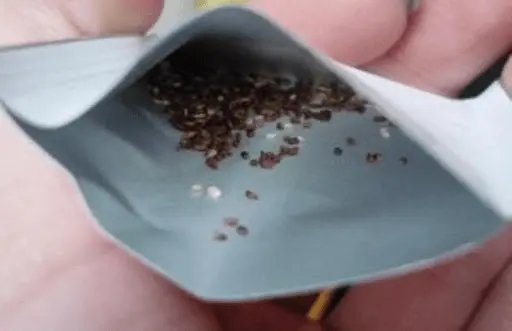
The seeds of the Carpathian bell are very small, so it is convenient to sow by mixing them with dry, clean sand.
For those who plan to start growing seedlings of this flower, knowledge of some of the nuances will certainly come in handy:
- The seeds of the Carpathian bell are very small: the weight of 1000 pieces, depending on the variety, is usually 0,25-1 g. In order to slightly thin the seedlings and achieve uniform germination, it is recommended to mix them with dry, clean sand, previously calcined and sifted through a sieve.
- You should buy seed only from trusted manufacturers. This will help to avoid regrading and get strong, viable seedlings.
- The seeds of the Carpathian bell are best germinated fresh, as they quickly lose their germination capacity.
- First, the seed must be stratified. Seeds should be wrapped in a piece of damp cloth, put in a plastic bag, tightly tied and placed in the vegetable compartment of the refrigerator. The terms of stratification are from two weeks to 1 month.
- Immediately before planting, the seeds can be soaked in a growth stimulant solution or simply in warm water for 4 hours. After that, the liquid should be filtered through a dense cloth and allowed to dry a little in the air.
When to plant the Carpathian bell for seedlings
The timing of planting seeds of the Carpathian bell for seedlings should be determined based on the climatic characteristics of the region:
- in the southern regions, you can start sowing at the end of February or at the beginning of March;
- in central Our Country, including the Moscow region, the best time would be mid-March;
- in the northern regions (Siberia, the Urals, the Leningrad region) it is best to wait until the beginning of April.
How to sow the Carpathian bell for seedlings
It is necessary to sow the Carpathian bell for seedlings according to the rules. First you need to prepare suitable containers and soil. Then sowing should be done, taking into account some features of this procedure.
Selection and preparation of containers
The best container for growing Carpathian bellflower from seeds is a wide and flat container no deeper than 7 cm.
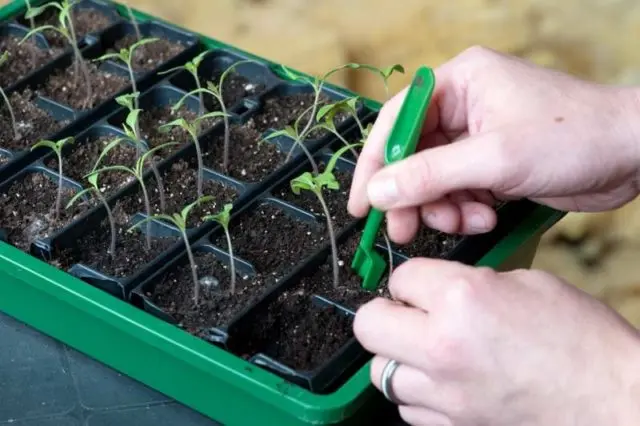
It is best to plant the seeds in a wide, shallow container filled with light, loose soil with a neutral reaction.
The container can be either plastic or wooden. The main condition is the presence of holes in the bottom to remove excess moisture. If there are none, they should be drilled or done independently with scissors or a nail.
Before use, it is advisable to disinfect the container by treating it with a pink solution of potassium permanganate.
Soil Preparation
The substrate for germinating the seeds of the Carpathian bell should be:
- easy;
- loose;
- moderately nutritious;
- with a neutral or slightly alkaline reaction.
A suitable composition of the soil mixture is as follows:
- garden soil (turf) – 6 parts;
- humus – 3 parts;
- fine sand – 1 part.
You can buy a ready-made universal substrate for seedlings of flower plants. In this case, it will need to be diluted with sand, perlite or vermiculite by mixing 1 part of baking powder with 3 parts of soil.
Sowing the Carpathian bell for seedlings
Sowing the seeds of the Carpathian bell in the soil is not difficult.
They do it like this:
- A layer of drainage (expanded clay, perlite, fine gravel) should be poured into the container about 1,5 cm.
- Fill the container with the prepared substrate, without adding 2-3 cm to its edges.
- Moisten the soil with water from a spray bottle.
- Spread the mixture of seeds with fine sand evenly over the surface of the soil. Under no circumstances should they be buried.
- Water the crops with a spray bottle.
- Cover the container on top with glass, a transparent lid or film, creating a “greenhouse effect”.
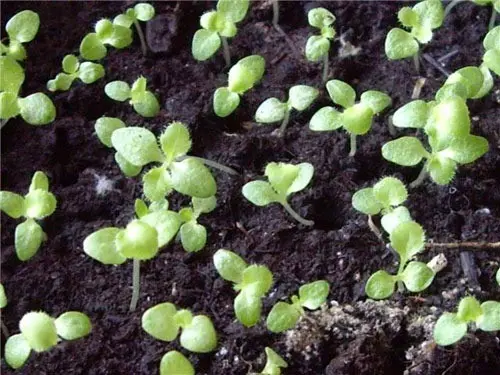
At the initial stage, seedlings develop slowly and need warmth, plenty of light and regular moderate watering.
Carpathian bellflower seedling care
Correctly organized care of the Carpathian bluebell after planting plays an important role. If favorable conditions are maintained, seedlings will begin to appear in 10-25 days.
Microclimate
Mandatory conditions for the germination of Carpathian bluebell seeds are a warm place and an abundance of light.
From the moment of planting until the emergence of seedlings, the temperature in the room with plants should be maintained at + 20-22 ° C. Then you can slightly reduce it (up to + 18-20 ° C).
Before the seeds sprout, the covered container with them must be kept on the sunniest window sill of the apartment. After the appearance of the first sprouts, it is desirable to organize the illumination of the Carpathian bluebell with a phytolamp, providing it with a 12-14-hour daylight hours.
During the first 2 weeks after planting, it is imperative to ventilate the plants, removing the shelter for a few minutes in the morning and evening. The residence time of seedlings without a “greenhouse” after their germination begins to be doubled daily. Then the film is completely removed.
Watering and fertilizing schedule
When growing the Carpathian bell from seeds at home, watering the soil at first is done from a spray bottle or a teaspoon. The approximate frequency of moistening the substrate is every 3-4 days, as it dries. When the sprouts hatch, the seedlings are carefully watered under the root, avoiding water on the leaves.
2-3 weeks after the plants are distributed in individual containers, you can water them with a complex mineral composition or humus-based fertilizer for seedlings.
Picks
The picking of seedlings of the Carpathian bell is carried out when they have 2-3 true leaves. The composition of the soil is the same as that used for seed germination. Containers can be selected both individual (glasses with a volume of 200 ml or more) and general – with the expectation that the distance between the seedlings is at least 10 cm.
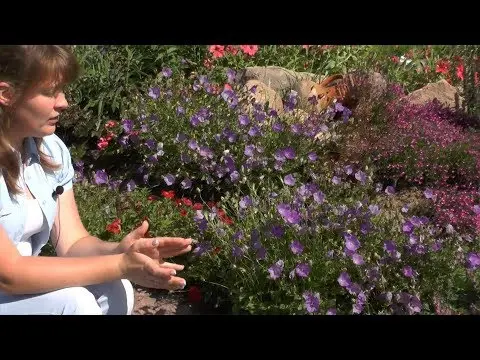
Seedlings of the Carpathian bell dive at the stage when they have 2-3 true leaves
The picking is done like this:
- 1-2 hours before the procedure, the seedlings are watered abundantly;
- prepared containers are filled with a substrate and small holes are dug in it;
- carefully remove seedlings from the ground in several pieces together with a clod of earth so as not to damage the roots (it is convenient to do this with a tablespoon or fork, turning it around with the back side);
- carefully separate lumps of the substrate and plant 3-4 plants in each container for picking;
- lightly compact the ground at the roots and water the seedlings.
Dived Carpathian bells can be placed in a greenhouse or greenhouse. 1-2 weeks before planting in the ground, it is advised to harden the seedlings. To do this, the plants are left outdoors initially for 2 hours and within 7 days the time of their stay in the open air is brought up to the whole night.
Transplant into the ground
Depending on the climate in the region, the Carpathian bluebell is transplanted to a permanent place in May or early June. Holes are dug in the selected area at a distance of 30 cm from each other. A seedling is carefully transferred to each hole along with a clod of earth, buried along the root collar and watered with warm water.
Diseases and pests
The Carpathian bell is rarely exposed to diseases. Among the ailments and pests that can damage his health, the following can be distinguished:
- Rust. The disease manifests itself in the form of red-colored “pustule” pads containing spores of the fungus on the above-ground organs of the plant. Affected leaves, stems, calyxes quickly lose moisture, dry and die. For treatment, fungicidal preparations are used (Abiga-Peak, Topaz, Fitosporin-M).

Sometimes rust can be observed on the leaves, stems and calyxes of the flowers of the Carpathian bell.
- Fusarium wilt. Often affects seedlings after picking or planting in open ground, when the root system is badly damaged. The causative agent of the disease is a fungus. It penetrates through the roots, which quickly become brittle, and spreads through the vessels of the plant. As a result, the stem at the root collar rots, the leaves begin to turn pale, quickly wither and dry. Affected plants should be immediately dug up and destroyed. The rest of the plantings need to be watered with a fungicide solution (Oksihom, Fitosporin-M).

At the stage of picking or transplanting into the ground, seedlings often suffer from fusarium
- Slugs. These pests attack the Carpathian bluebell mainly in wet, rainy weather, eating young leaves. To combat them, folk remedies (mustard powder, hot pepper) and chemicals (Meta, Thunder) are used. Hand picking of pests is also effective.

In wet weather, young leaves of the Carpathian bell can be eaten by slugs.
Conclusion
Growing a Carpathian bell from seeds is not particularly difficult. It must be borne in mind that seedlings will successfully sprout if the seed is fresh and of high quality, and the soil is light and loose. A place for a container with seedlings should be chosen warm and bright, at first organize a “greenhouse” for the sprouts and regular, accurate watering. The attention and care provided to the Carpathian bluebell at the initial stage of life will eventually allow you to get beautiful, healthy and unpretentious plants for your garden that will delight you with abundant and bright flowering for more than one year.











